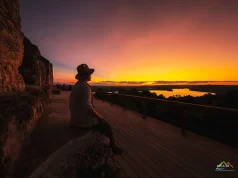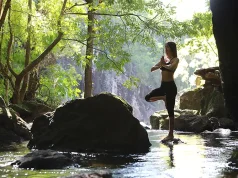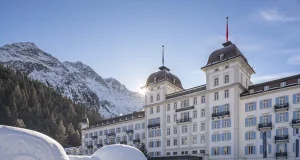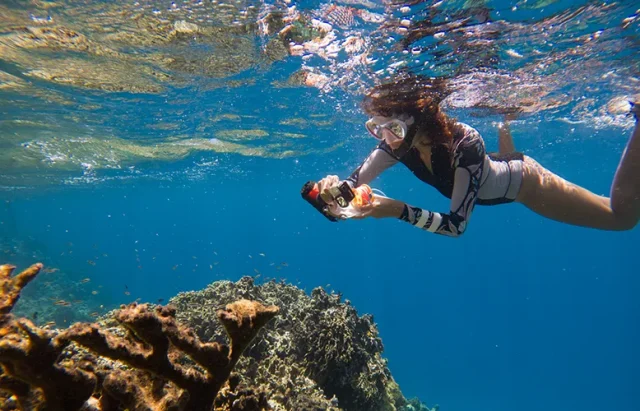
It’s a rare occurrence for our team to be advised to get OUT of the water. In fact, for anyone familiar with the Edges of Earth Expedition, you probably recognize that our whole thing is strongly urging people to get IN to the water! It’s our opinion that immersing yourself in the underwater world is one of the best ways to gain a greater understanding and appreciation for it. And we know all too well that even simple diving doesn’t scratch the surface of the ocean’s mysteries; there’s so much left about our blue planet that we still do not know.
But on Roatan island in Honduras, the overwhelming sentiment from those intimate with the conservation scene was to get as many people out of the water as possible. And all of these dive sites are visited by those looking to enjoy the calm, warm waters surrounding what once was the incredibly healthy Mesoamerican Reef, the second largest barrier reef in the world!

With 55 dive shops across the Bay Islands, which include Roatan, Utila and Guanaja, tourism has majorly boomed in this region. According to the Roatan Tourism Bureau, the creation of the airport and cruise ship ports are what ultimately put these islands on the map, with people staying anywhere from 10-11 days on average to dive as many sites as possible. With tourism being the number one economic driver on these islands, ocean activities dominate the tourism scene, which puts incredible pressure on the reef.
During pandemic times, the reef suffered devastating impact from stony coral tissue loss disease (SCTLD). This disease has the power to kill off corals in a matter of days, and chews through entire colonies. SCTLD has been spotted in Florida, throughout the Caribbean and as far south as Honduras, leaving a trail of coral graveyards in its wake. While teams like the Roatan Marine Park (RMP) are working to restore the reefs and conserve what’s left—inspiring those who are in the water to dive responsibility—they simply need as many people OUT of the water as possible as well. And with that, they have been encouraging tourists to explore Roatan terrestrially, from the surface rather than from the depths.
This effort not only helps with ocean management, but also creates new livelihoods for locals in tourism to show their home in a way that directly benefits them. RMP has created a community development program that enables aspiring entrepreneurs to get their start in tourism, leveraging their own resources to benefit themselves, the marine ecosystem and visitors alike. Recognizing the need to alleviate this strain, reverse marketing efforts are now highlighting the island’s numerous land-based attractions. Visitors are encouraged to explore the rich cultural heritage, lush jungles, and vibrant wildlife of Roatan.
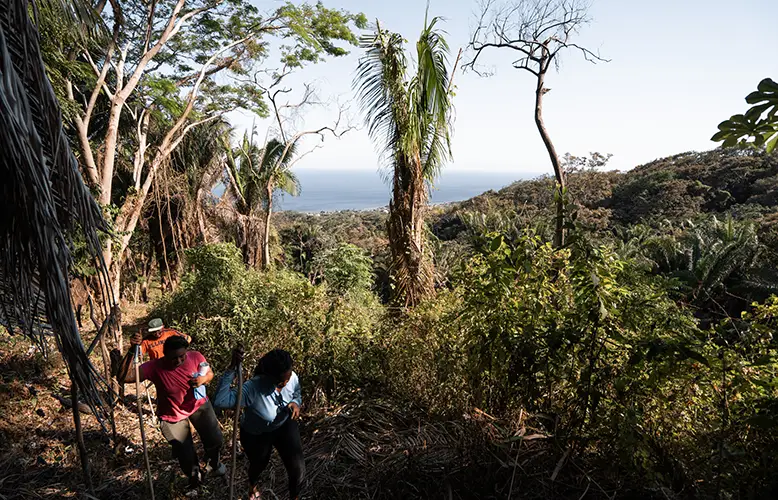
We met Neryn, who is just getting started with creating a tour that takes visitors up into the hills of Roatan to explore its rich history and natural beauty. His tour highlights the pirate history of the island, the legacy of the indigenous Paya communities, and the diverse terrestrial wildlife that inhabits the area. By the time we arrived, Neryn’s trail was still in its pilot and prototype stage. The path was not yet fully cleared and there was a significant amount of work still remaining to establish it as a prominent attraction.
To see Neryn in action, we headed to his community called Las Brisas. Immediately upon our arrival, he launched into captivating stories about buried treasures and lingering spirits in limbo. We hiked up a nearly vertical cliffside to the center of the island, where we were greeted with panoramic views of Roatan, a perspective we weren’t expecting given our usual marine focus. As we continued walking after reaching the top, we couldn’t help but notice artifacts from the Paya days scattered in plain sight, with red clay being the primary indicator. This area has attracted both local and international treasure hunters, drawn by discoveries of gold, silver, and jade.
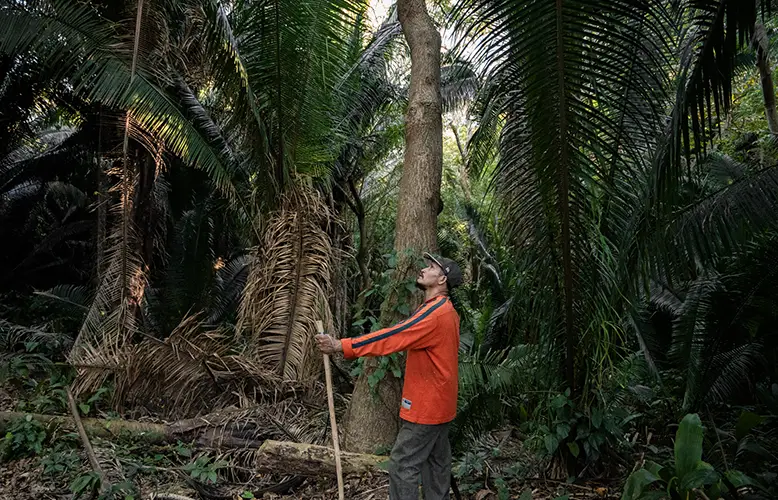
Back in the ’80s and ’90s, when exploitation regulations were looser, treasure hunters flocked to Roatan, drawn by tales of buried treasures and the island’s pirate past. Legends even claim that Blackbeard once called this place his hideaway. Neryn, a Paya descendant, has been exploring these hills for 25 years, and was clearly on a mission to show us (and those to follow) what history unfolded here, what significance this place holds to him and what it once was like on Roatan. He shared stories of how, as a boy, he would find iguanas, various parrots, wild rabbits, and deer, all abundant in the area. Today, however, these sightings are rare. Climate change, deforestation, tourism, and other human activities have dramatically altered the landscape of Roatan. You could feel his underlying pain in sharing with us the changes he’s witnessed over two decades.
A lot has changed, but Neryn is on a mission to spotlight this land’s history and share the stories of the past with those willing to get out of the water and explore what else Roatan has to offer. And he’s not the only one. After the spirit stories, we headed over to the village of Corozal to meet with Don Isidro Flores and his two right hands and family members, Mariela Flores and Michel Flores, of “Island Honey.”
Following the fishing prohibition in Corozal that put many out of business, RMP proposed honey production as an alternative livelihood for former fishermen. The initiative, starting with four honeycombs, aimed to promote sustainable living on non-dependant marine resources. With that, Don Isidro and his family built a thriving honey production business, creating 100% raw and fair trade honey-based products.
Their unique location, surrounded by an abundance of flowering trees, attracts two kinds of prevalent bees, especially to the bay leaf trees. These trees play a crucial role in the production of a distinct blend of honey, as the bees forage within a 5 km radius, sampling various flowering plants. This natural diversity imparts a unique flavor to their honey. Capitalizing on this attraction, the team of honey makers has established a successful enterprise, supplying honey to major retailers, hotels, and other significant buyers throughout Honduras.
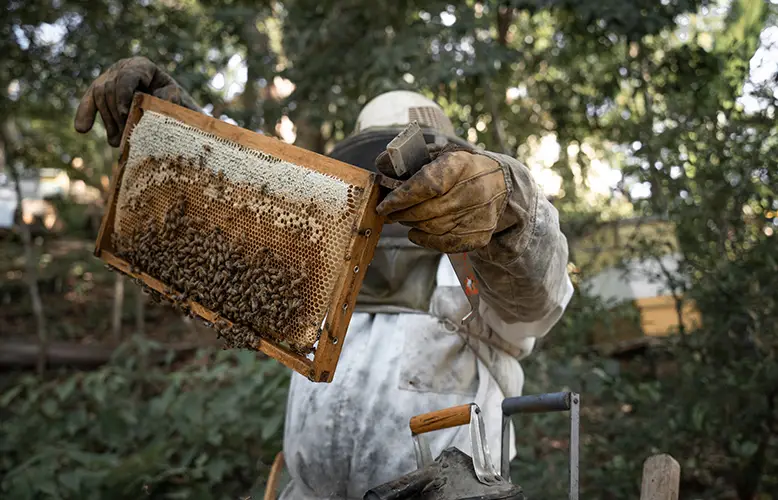
We had the opportunity to explore the beekeeping operation firsthand by walking up their property’s massive hill and witnessing the bees in action. The site houses 105 hives, each teeming with active workers, creating their extensive, thick and juicy honeycombs. Onsite, the team has a dedicated factory where they produce honey by the gallon. Around Honduras, this honey is considered a prized, yet somewhat elusive commodity. Honduran honey has not yet received the same “buzz” as other American honey manufacturers. However, the word is starting to spread about the quality and unique flavor of this honey, leading to increased demand and recognition throughout the country.
Don Isidro used to be a fisherman, and his wife sold their catch at the local markets. This was their livelihood, supporting their family and raising six daughters! However, as the pressures of overfishing grew, they made the crucial decision to transition to beekeeping. This change proved to be incredibly successful, allowing them to capture a significant market share with virtually no competition. Their honey business is now thriving, far surpassing the success they had as fishers.
This shift is not only beneficial for Don Isidro’s family, but also for the environment. Overfishing has become a critical issue in Roatan, making it essential for people to find alternative livelihoods that do not rely on the sea. It aligns with the concept of reverse marketing: encouraging people to appreciate and protect the ocean by reducing direct human impact on it. By promoting land-based activities and sustainable businesses like beekeeping, Roatan is working to preserve its marine ecosystems.
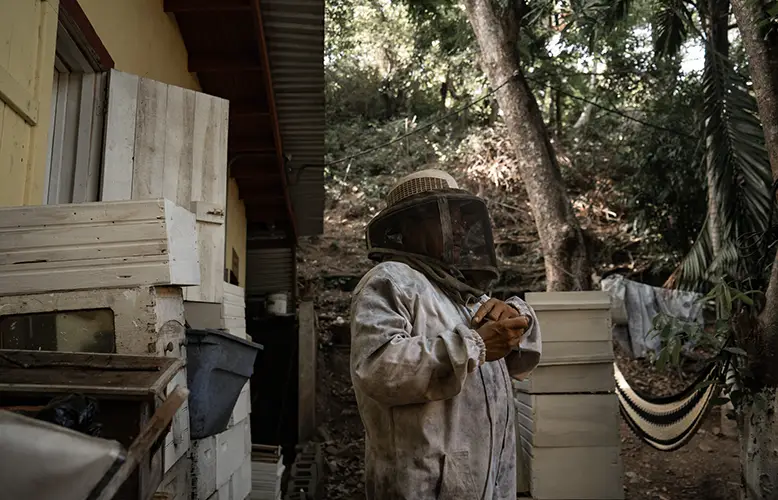
RMP has set an ambitious goal to foster these developments by 2026, with a particular focus on service-based businesses. Yet, witnessing these successful examples of community development efforts, it’s clear that the journey is not without its challenges. While these initiatives thrive during the high season with cruise ship visitors, the off-season poses significant hurdles.
The key question is how RMP can support locals in establishing their own businesses even during quieter times—something they are working to figure out with “Island Honey” as the benchmark. Encouraging entrepreneurship is an uphill battle, as not everyone is inclined toward or equipped for starting a business. However, RMP is determined to nurture as many as possible to ensure more successes like the honey processing business.
When communities leverage their natural resources ethically and sustainably, it showcases the untapped potential in their own backyards. From utilizing coconuts, honey, and other local foods, as well as promoting activities like trail hiking and emphasizing historical landmarks, marine ecosystems have a moment to recover. By diversifying attractions and economic activities, RMP is offering visitors a chance to see what sits above and below the waterline, making Roatan that much more compelling to explore.
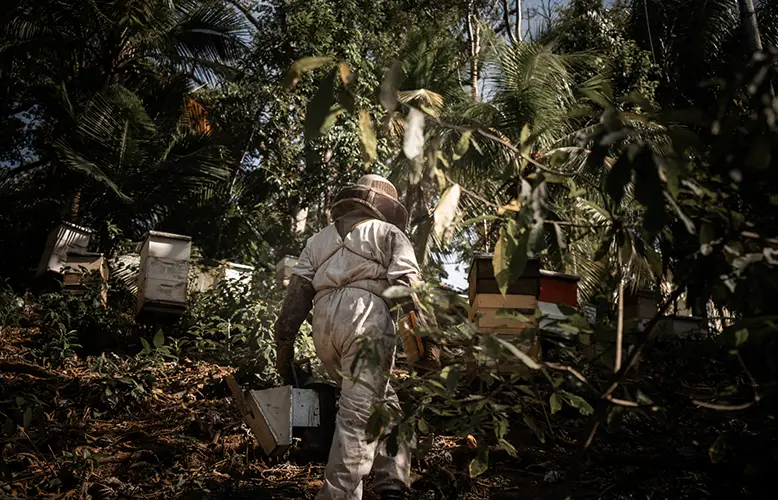
So even if you love the ocean and spend the bulk of your time in it, consider taking a break. Come up for air, see what’s on the surface and support initiatives that directly benefit the sea and communities that rely on it. You never know what Paya treasures you’ll find hidden in plain sight. For more inspiration, explore home office storage cabinets that can help organize your space efficiently.


